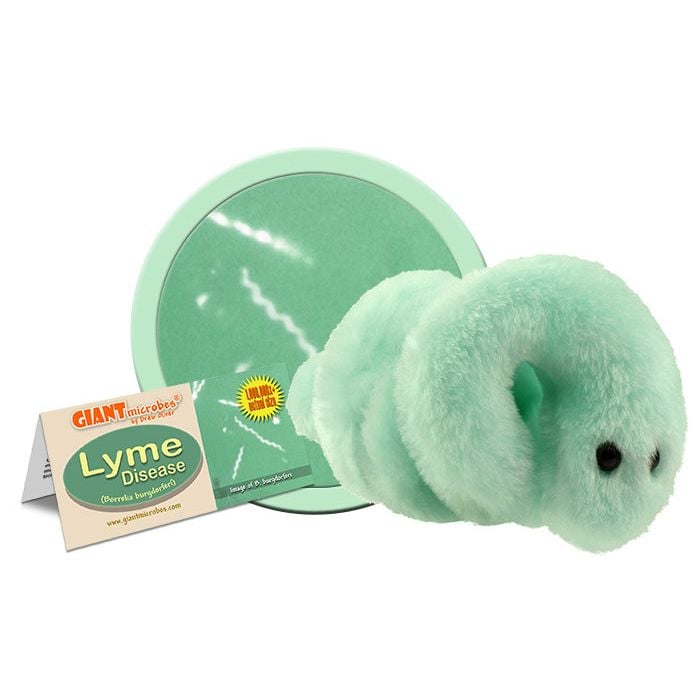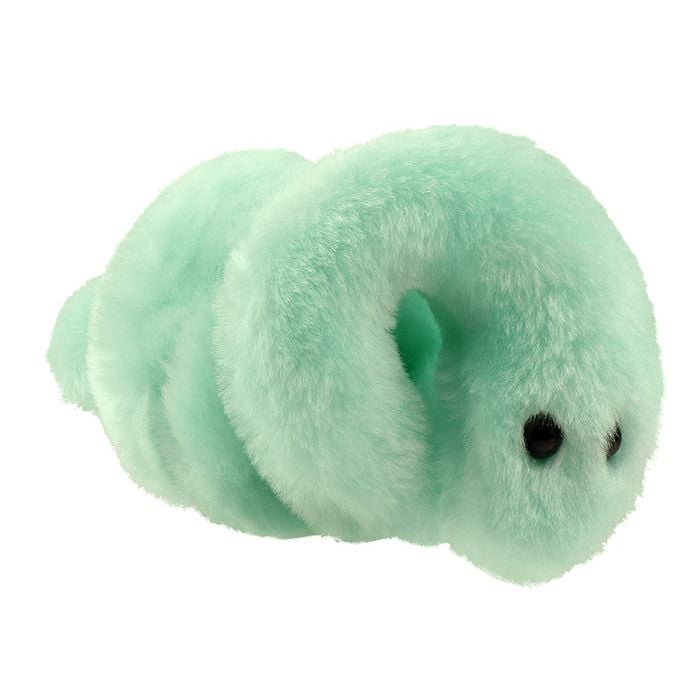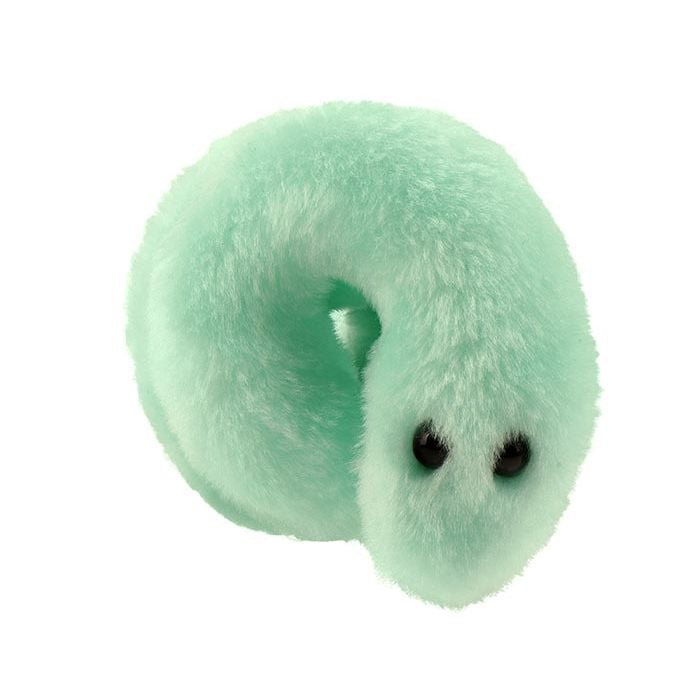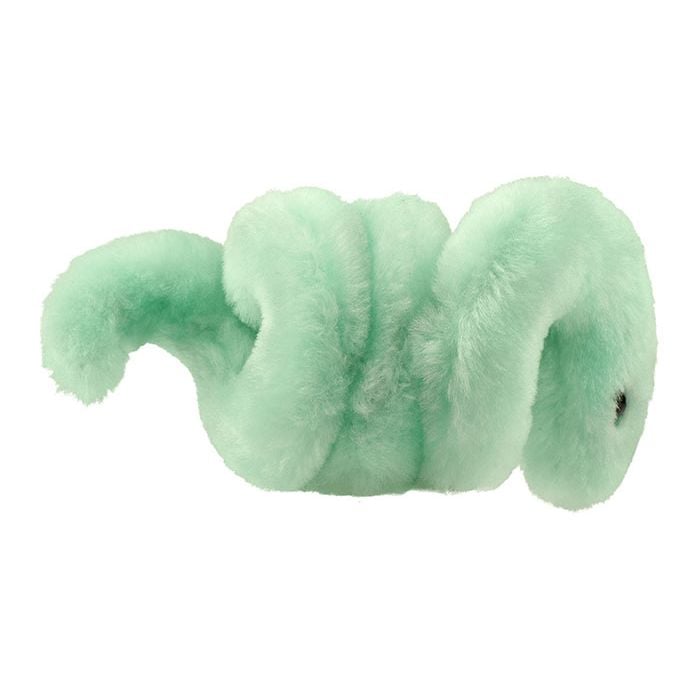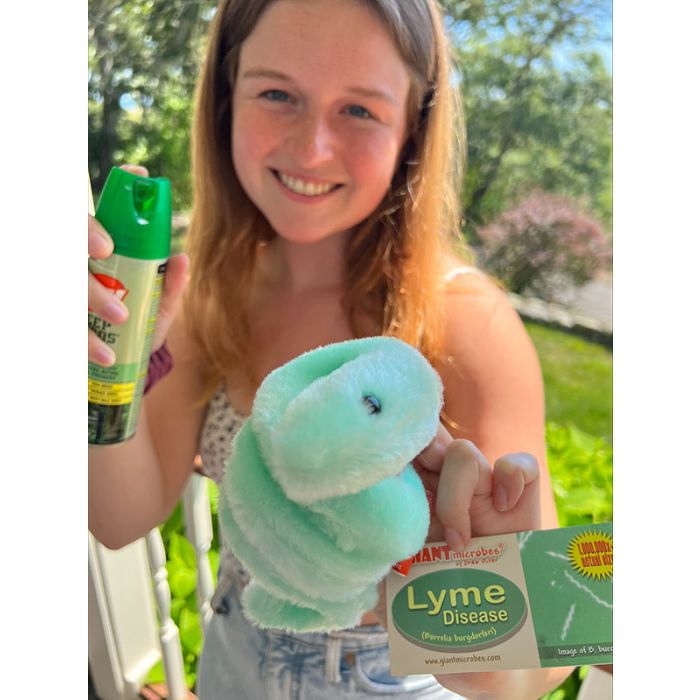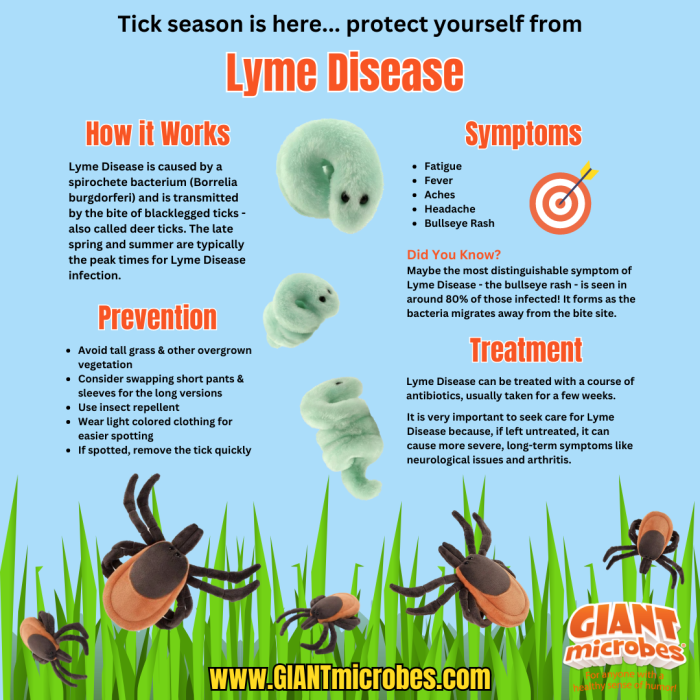Lyme Disease (Borrelia burgdorferi)
Feeling achy? Tired? This little guy rides the tick-express straight to your favorite outdoor spot.
Unique, learning tool and gift for public health enthusiasts, students, doctors, and anyone with a healthy sense of humor. Soft, cuddly and memorable get well gift for recovering friends and loved ones. Great reminder to check for ticks and prepare for the outdoors.
Features high quality materials and comes with an educational printed card with fascinating facts about Lyme Disease. Pairs well with our Tick plush!
Size: 6 x 3 x 2.5”

Global Lyme Alliance is dedicated to educational programs and ground-breaking research to find diagnostics and cures for Lyme disease. 5% of your purchase will be donated to GLA.
Product Details
Additional Information
| Sizes | Giantmicrobes are based on actual microbes, cells, organisms and other critters, only 1,000,000 times actual size! Gigantic (GG) 16-24" XL (XL) 10-15" Original (PD) 5-8" Keychain (KC) 2-4" with clip |
|---|---|
| Materials | Plush from all new materials. Stuffed with polyester fiber fill. Surface washable: sponge with water & soap, air dry. |
| Packaging | Each plush microbe includes a printed card with fun, educational and fascinating facts about the actual microbe or cell. |
| Safety | Every product meets or exceeds U.S. and European standards for safety. For ages 3 and up. |
All about Lyme Disease (Borrelia burgdorferi)
FACTS: First identified in the 1970's in the United States near Lyme, Connecticut, Lyme Disease is now one of the most commonly reported tick-borne illnesses.
The Borrelia burgdorferi bacterium was identified as the cause of the disease in the early 1980's, though DNA-analysis of rodents and ticks in museum collections demonstrates that the bacterium has existed for centuries, if not millennia. Blacklegged ticks (or deer ticks) pass the bacterium from small animals to humans.
Although common symptoms include aches, fevers, and fatigue, the signature symptom is an expanding, bull's-eye rash (or EM, erythema migrans). Typically, the rash spreads out from the site of the tick bite, appearing anywhere from a few days to a month after the bite. As the rash grows, the origin fades leaving a ring that resembles a bull's-eye.
When the signature rash is present and tick-exposure is presumed, antibiotic treatment is recommended. However, the rash develops in only 80% of cases, so where symptoms and tick-exposure warrant further medical examination, laboratory testing is also available.
Untreated, Lyme disease can lead to arthritis, facial paralysis, meningitis, and even cognitive disruptions such as memory loss and mood changes. So when you're in the country, keep an eye out for ticks, or you could end up a target.
| Name | The name Lyme Disease comes from the outbreak in Lyme, CT. The species name Borrelia burgdorferi comes from the scientist who isolated it. |
|---|
| Where It Lives | Tick bites. People who have it are not contagious. |
|---|
| Symptoms | Circular redness around the bite and flu-like symptoms. If the disease progresses, it can cause problems in major parts of the body like the heart, joints, and nervous system. |
|---|
| Cure | Antibiotics |
|---|
| History |
1975: Allen Steere discovered the disease after an outbreak of rheumatoid arthritis in Lyme, CT. 1982: Willy Burgdorfer isolated the bacterium in ticks that caused the disease. Big Outbreaks: 1975: First outbreak in Lyme, CT. 1982-1983: 210 infected in Westchester County, NY. Recent Outbreaks: 2014: Lyme infections increased 12% in New York from 2013. |
|---|
| Fascinating Facts |
• It is most common in the Northeast (US). • Infected ticks typically come from deer. • Most common tick inflicted illness. |
|---|








